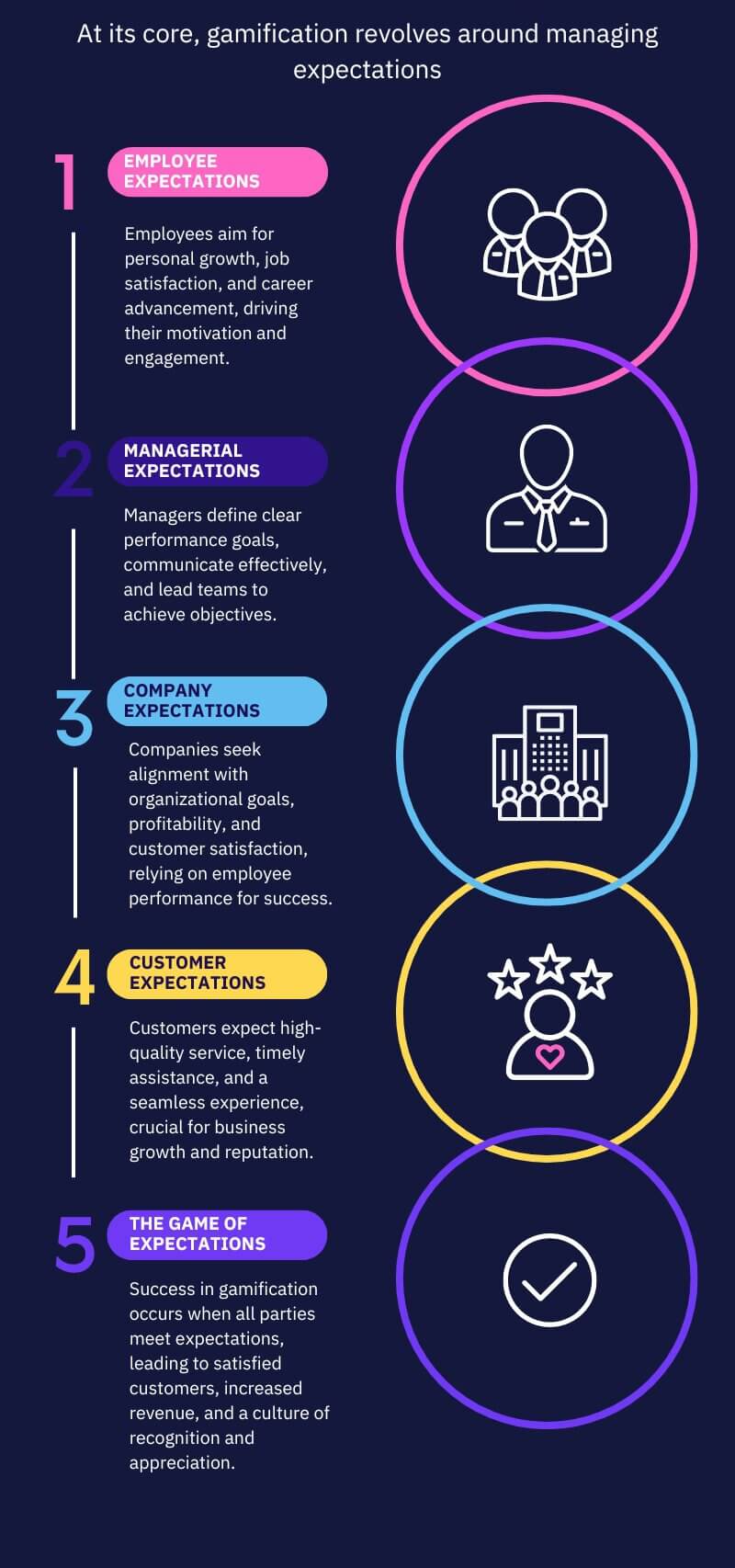Gamification is a powerful tool for motivating employees and enhancing customer experiences. At its core, gamification revolves around managing expectations: those of the employee, their manager, the company, and ultimately, the customer.
Employee Expectations:
- Employees set personal goals and expectations for themselves within their role.
- These expectations often revolve around job satisfaction, career advancement, and personal growth.
- Meeting these expectations leads to a sense of accomplishment and fulfillment.
Managerial Expectations:
- Managers have expectations from their employees regarding performance, productivity, and contribution to the team and company objectives.
- Effective communication of these expectations is crucial for alignment and success.
- When employees meet or exceed these expectations, it reflects positively on the manager’s leadership and management skills.
Company Expectations:
- Companies have overarching expectations related to organizational goals, profitability, and customer satisfaction.
- Employee performance directly impacts the company’s ability to achieve these expectations.
- Aligning individual and team goals with company objectives ensures collective success.
Customer Expectations:
- Customers expect high-quality products or services, timely assistance, and a seamless experience.
- Meeting or exceeding customer expectations is essential for loyalty, positive reviews, and business growth.
- Customer satisfaction is the ultimate measure of success in any business.
Gamification is the Game of Expectations
- Success in gamification is akin to winning a game where all parties involved have their expectations met.
- When employees deliver excellent service, customers are satisfied.
- Satisfied customers lead to increased revenue and positive brand reputation.
- A thriving company rewards employees for their contributions, creating a culture of recognition and appreciation.

Managing expectations is crucial for success in gamification. When all stakeholders – employees, managers, companies, and customers – have their expectations met, it leads an organization to reach its peak performance.
Recognition for outstanding performance serves to reinforce employee motivation and engagement, further contributing to the positive outcomes. According to a Gallup report, companies with highly engaged workforces are 21% more profitable.
By understanding and aligning expectations, businesses can create a harmonious environment where all parties benefit.









